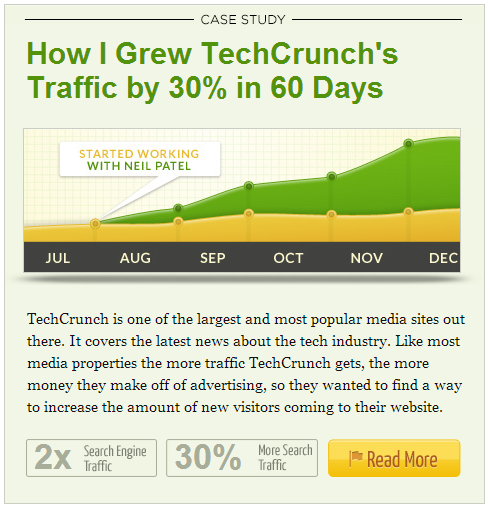Your blog's title is the first thing that any reader will come across and is often the sole piece of information using which they make a decision to click through. Therefore, it is very important that you create titles that get people to want to read.
The primary underpinning of any great headline is to create curiosity in the reader's mind. According to the paper "The Psychology of Curiosity: A Review and Reinterpretation" by George Loewenstein, curiosity occurs when there is a difference between what we know and what we want to know.
Let's take a second and review the two key phrases:
- What we know - In the context of creating better blog titles, this means understanding what your readers know. So for example, the title "A Beginner's Guide to Starting with Google Adwords" might not be so relevant on a blog read by experienced marketers.
- What we want to know - The other element of curiosity is what is it that we want to know. For us, it means we need to focus on what is it that our readers want to know. And that is the key to any marketing or sales communication: writing or talking about the concerns, questions, problems and lives of your audience. However, just writing about what our readers want to know is not enough, we have to also communicate it as something that they would want to know.
Keeping these two fundamentals in mind, let's get to 3 psychological tactics and how they you can use them to build curiosity in the reader's mind.
1) Promise to show how someone did something awesome
This image is taken from Neil Patel's blog Quicksprout and I'm sure a very large amount of readers will be clicking through to check it out. Why? Because while a lot of people might claim to be adept at increasing traffic to a website in a short time using white hat techniques, very few actually can. This simple self realization and the fact that they all want to be able to do that, drives the curiosity that makes them click through to the page (here it is if you're interested).
2) Induce risk or fear, then provide the solution
Have you seen headlines that go something like "The 3 most common link building mistakes and how to NOT commit them"? What are these headlines doing? They're inducing fear in the minds of readers. However, there's another very important bit... after inducing fear, they're showing a way to solve them.
This is very very important. You can't just let your readers hanging and nobody likes a critic who just says "you're wrong". Most people are far more interested if you say "You're doing it wrong and here's how to do it right", especially when there is money involved. Here's the research behind this bit of psychological tactic.
3) Make readers lazy by giving lists
Image credit: Pete Boyd @ Flickr
Have you ever wondered why do lists work so much? What is it about them that just makes you click? The answer is simple. Lists promote laziness, and people love lazy.
Here's an example: I have a WordPress website and I know it isn't SEO optimized. I know there's a lot I can do but am confused about where to start or how to go about it. That's when a headline screams "10 Quick SEO Fixes for Your New WordPress Blog". Am I going to click through? You bet I am. Am I going to use it as a checklist and follow all the instructions? Yes sir. Has it made me lazy by saving me time and effort? Oh thank god for that, because yes it has.
Lists work because readers don't need to do their own research, don't need to decide where to begin (remember that bit about a journey of a 1000 miles starting with a single step? It's there because the first step has the highest mental barrier), and can tick off stuff as they complete it. Like I said earlier, lists promote laziness and we humans absolutely love lazy.
A final, pro tip
A/B test everything. The experts will tell you a lot of stuff but in the world of Internet Marketing, it's all about data. And no better way to test your learnings, hypotheses and assumptions about headlines than to A/B test them on real visitors because that's the best form of feedback out there. In fact, that's how the pro's create winning titles: not by blindly following what others say, but testing it on their audience and seeing what works best for them.
To understand A/B testing of headlines, check out these case studies.
- Using A/B Split testing to refine your headline: 90% increase in conversion rate
- How The Huffington Post uses real-time testing to write better headlines
What others psychological tactics do you use to craft your headlines?
While I've tried to show a few tricks that can help, obviously there are many more. If there are others you use or have had good and bad experiences with these ones, let's talk about them in the comments.
If you liked this post, you might also enjoy 5 keyword research steps for winning blog post titles


